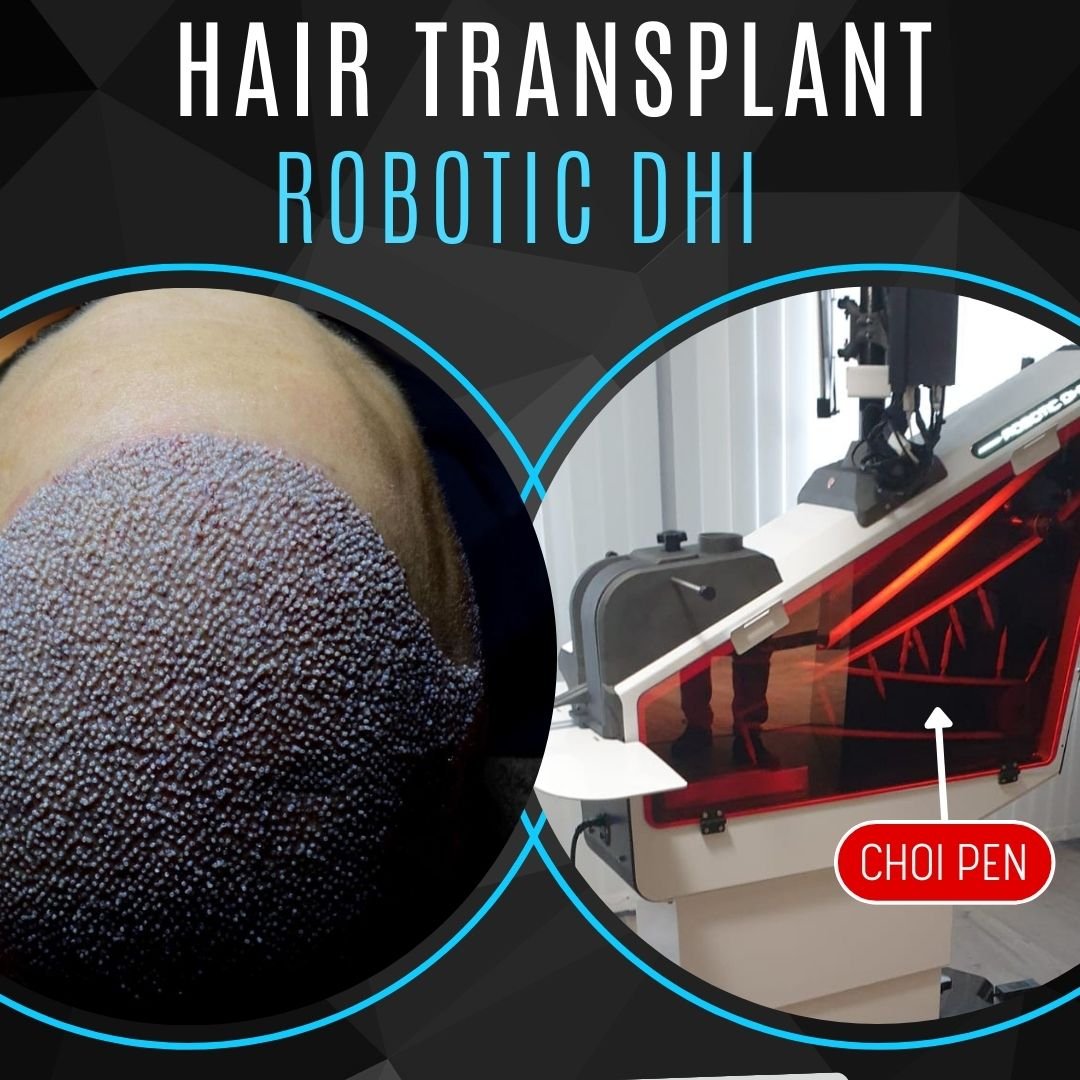
Hair loss can significantly affect self-confidence and quality of life. Fortunately, advancements in medical technology have led to innovative hair restoration solutions, placing Robotic Direct Hair Implantation (DHI) at the cutting edge. This approach combines robotics’s precision with DHI’s effectiveness, delivering unparalleled accuracy and natural-looking results.
What is a Robotic DHI Hair Transplant?
Robotic DHI hair transplant is an advanced technique that enhances the Direct Hair Implantation (DHI) process using robotic technology. Unlike traditional methods, DHI involves implanting hair follicles directly into the recipient area without pre-creating recipient sites.
By integrating robotics, surgeons achieve greater precision and efficiency, leading to superior outcomes. Doctors count and track each transplanted hair follicle individually using a monitor counter for the patient. Surgeons include the number of roots in a detailed report provided at the end of the operation.
The Robotic DHI Procedure
Pre-Procedure Planning: The process starts with a thorough evaluation of the patient’s hair loss pattern and donor hair availability. Using advanced imaging technology, the surgeon creates a personalized treatment plan that details the number of grafts needed and the best placement for achieving natural-looking results.
Robotic Extraction: During the procedure, the robotic system employs specialized algorithms to accurately identify and extract individual hair follicles from the donor area, usually located at the back or sides of the scalp.
To enhance the quality of the transplant, we apply PRP (Platelet-Rich Plasma) and Mesotherapy to each hair follicle within the device, and we use UV light to treat each graft, ensuring optimal growth conditions.
Recipient Site Creation: After harvesting, we prepare the recipient area with precision for implantation to ensure that the new follicles blend seamlessly with the existing hair.
The team carefully places the grafts into a Choi pen and then inserts them into the device for implantation. The thin tips used in the Robotic DHI device allow for denser transplantation with minimal damage to the applied area.
Time-Efficient Implementation: Two specialists work at the bedside in front of the device, taking the pens that pass through various stages in the device and performing the transplantation by hand.
The device design, which accommodates two specialists and three supporting nurses, significantly reduces operation time and allows the team to transplant a high number of hair follicles in a single session This efficiency is a major advantage, as it eliminates the need for multiple sessions over 6-12 months.
Post-Procedure Care: Following the procedure, patients receive tailored care instructions to support a smooth recovery, including gentle washing techniques and guidelines to avoid activities that might disrupt healing. Additionally, we can record and store the operation via USB, allowing patients to watch the recording during the procedure and review it later for peace of mind.
Advantages of Robotic DHI Hair Transplant
- Unmatched Precision: Robotic DHI offers unparalleled accuracy in follicle extraction, recipient site creation, and implantation, resulting in natural-looking results that blend seamlessly with existing hair.
- Enhanced Efficiency: The robotic system streamlines the transplant process, reduces overall procedure time, and allows us to transplant a higher number of grafts in a single session.
- Tailored Customization: The system enables precise customization of the hairline and implantation pattern, ensuring a result that complements the patient’s unique facial features.
- Comfort and Convenience: The device provides a comfortable transplantation experience, allowing patients to follow the procedure on a monitor, watch the operation live, or enjoy entertainment through digital platforms.
Comparing Hair Transplant Techniques: Robotic DHI, DHI, and FUE
When considering hair restoration, it’s essential to understand the differences between various techniques. Robotic DHI enhances the traditional Direct Hair Implantation (DHI) method by integrating robotics for greater precision and efficiency.
Unlike Follicular Unit Extraction (FUE), which manually extracts and implants hair follicles, Robotic DHI offers advanced technology for more accurate placement and better results. While DHI provides effective outcomes with manual precision, Robotic DHI takes it a step further by streamlining the process and improving overall efficiency. Explore how each technique could benefit your hair restoration needs and find out more about DHI vs. FUE to make an informed choice.
How Robotic DHI is Essential for Afro Hair Transplants
Robotic Direct Hair Implantation has emerged as a crucial technique for performing hair transplants on Afro-textured hair, known for its unique curl patterns and density.
This advanced technology not only addresses the challenges associated with transplanting curly hair but also offers precision and customization that are vital for achieving natural-looking results. For more information on Afro hair transplant in Turkey and how this technology can benefit you, consult with our expert medical team to explore your options.
Conclusion:
The Robotic DHI hair transplant is a breakthrough in hair restoration, combining the precision of robotics with the effectiveness of Direct Hair Implantation. This method not only ensures accurate extraction and placement of hair follicles but also improves the efficiency of the procedure, shortening the time required and allowing more grafts to be transplanted in a single session.
With the help of advanced imaging and robotic systems, surgeons achieve results that seamlessly blend with existing hair, delivering natural-looking outcomes that boost self-confidence. Additionally, the technology’s flexibility makes it highly effective for Afro-textured hair. Overall, Robotic DHI is a cutting-edge solution in hair restoration, providing customized, high-quality results while emphasizing patient comfort and convenience.

